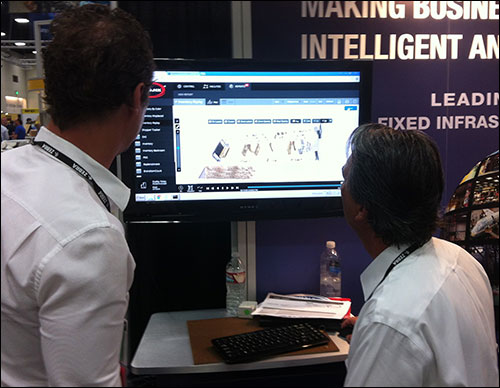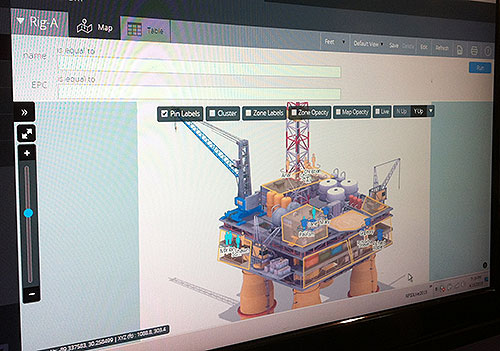At the RFID Journal LIVE! conference and exhibition, being held this week in San Diego, Calif., Mojix announced the highly configurable sensor network management software that it calls ViZix. The company describes the software as “sensor agnostic,” and says it is designed to be applicable to any vertical industry, whether a user wants to track individuals or things—either Internet-connected things or those not connected. ViZix is available now to any Mojix customer.
In 2008, Los Angeles-based Mojix made a sizable splash at that year’s LIVE! conference with its unique approach to RFID. With its STAR system, which includes phased-array antenna technology (using multiple antennas to concentrate RF signals and cancel out RF noise) and eNode receivers, Mojix enabled end users to view the locations of items tagged with passive EPC Gen 2 RFID labels—in real time, in three dimensions and within about 1 meter (3.3 feet)—24 hours a day.
Over the past seven years, says Mike Kastner, Mojix’s senior VP of sales and marketing, the company began integrating different types of sensors and data-collection techniques in order to manage and add context to the large data streams it was collecting. “We’ve gained tremendous experiences with integrating motion sensors and vision systems—IP cameras used along with image processes—in order to determine when to fire our antennas to collect data,” he says. This allowed Mojix to filter tag data at the point of collection, rather than having to send large data streams to a server and then later filter that information.
At the same time, Kastner says, its customers were increasingly interested in collecting non-RFID data from other types of sources, such as GPS, Bluetooth, ZigBee and Wi-Fi. So Mojix responded.
“When you get down to it, what brings the maximum value for our customers is not the type of technology used to collect data,” Kastner says. “What they care about is the data itself, and they want it presented in a format [from which] they can take an action—according to their own business and workflows. No one tool fits all jobs, so we started integrating different technologies as we’ve gone along.”
That work evolved into ViZix.
Retail, oil and gas, and manufacturing are the first industries in which Mojix expects to see ViZix deployments. The company demonstrated use cases at the conference describing likely usage scenarios in these sectors.
In a retail setting, for example, ViZix can be used not only to track RFID-tagged inventory, but also to monitor zones within a store for misplaced items, which are then conveyed to a store associate on a map so that he or she can quickly retrieve the items and place them on the correct shelf, thereby helping to ensure that customers find the items they seek. Or, a retailer can use ViZix to review the history of an item’s movements throughout a store—how long it remained on the shelf, inside a dressing room, mis-shelved, and so forth. It could also alert retailers if an item has moved through an electronic article surveillance gate without being registered as sold in a point-of-sale system, indicating that it has been stolen.
For users in the oil and gas industry, the software can show offshore oil rig managers the locations of all workers, vis-à-vis their identity badges, during a muster operation in response to an emergency. Those badges may be Wi-Fi-based or employ passive RFID or some other technology. ViZix can be used with any type of standard sensor input, the company reports.

The software is designed so that anyone with basic computer skills can create new reports, tables or maps—and a zoom in/out feature mimics Google Maps, allowing a user to see, for instance, a city-wide view of retail stores, zoom into a particular location and then zoom down to the shelf level.
ViZix was developed using open-source software. Users can integrate it with enterprise software made by Oracle, SAP or IBM, among others.
With ViZix, Kastner says, customers in the RFID space can begin to branch out into other sensor technologies that could help them add value to their business, while companies that come to the software by searching for an IoT-specific solution—based on the buzz being generated around the Internet of Things—might find that RFID meets their needs, either as a standalone technology or in combination with other sensors.
“I think ViZix will help any company looking to deploy RFID,” Kastner says, “but it also lets Mojix compete with the major IoT platform providers, such as ThingWorx or Xively.”


